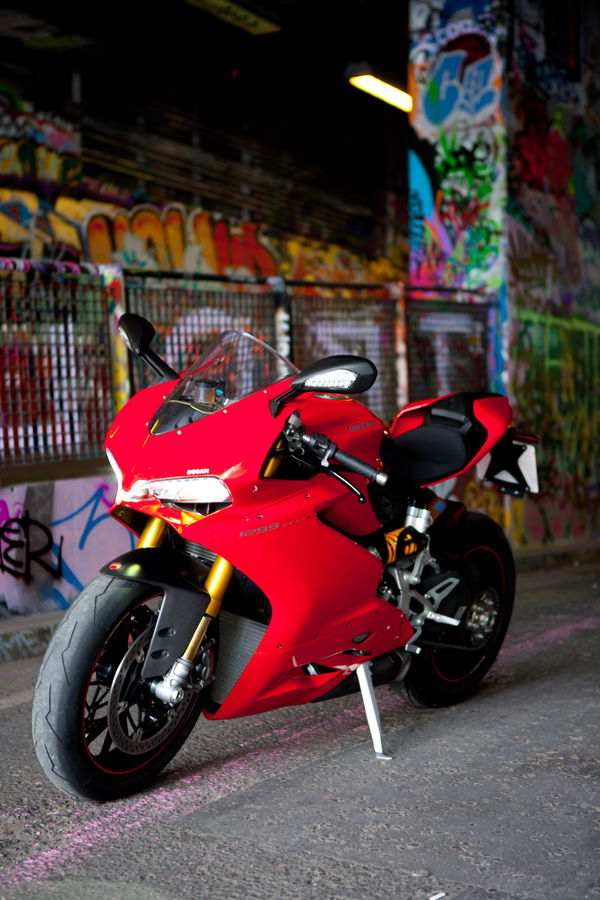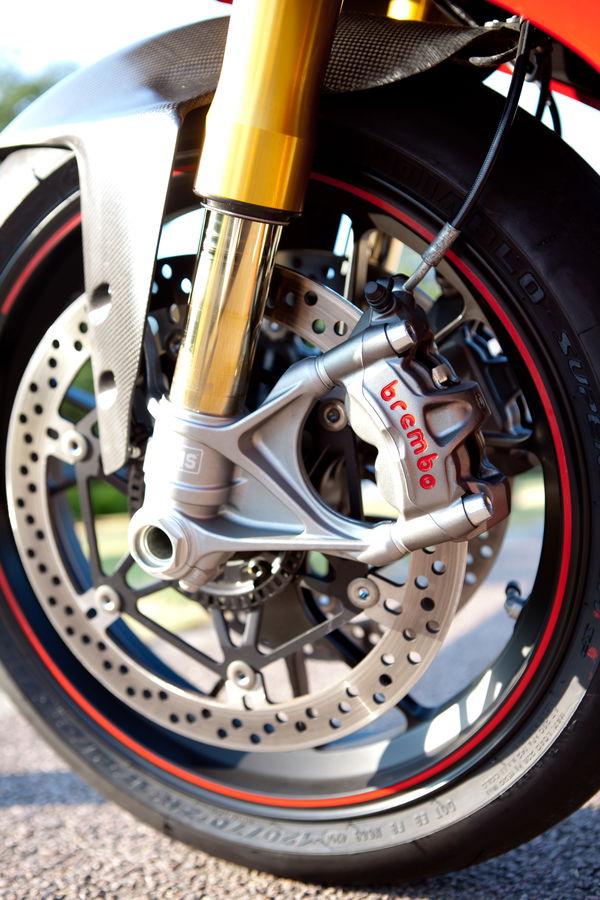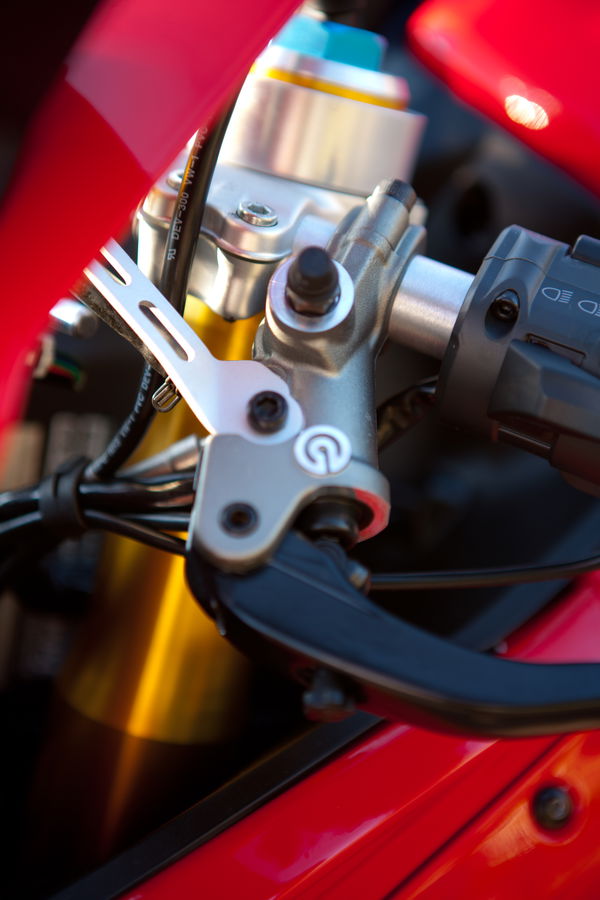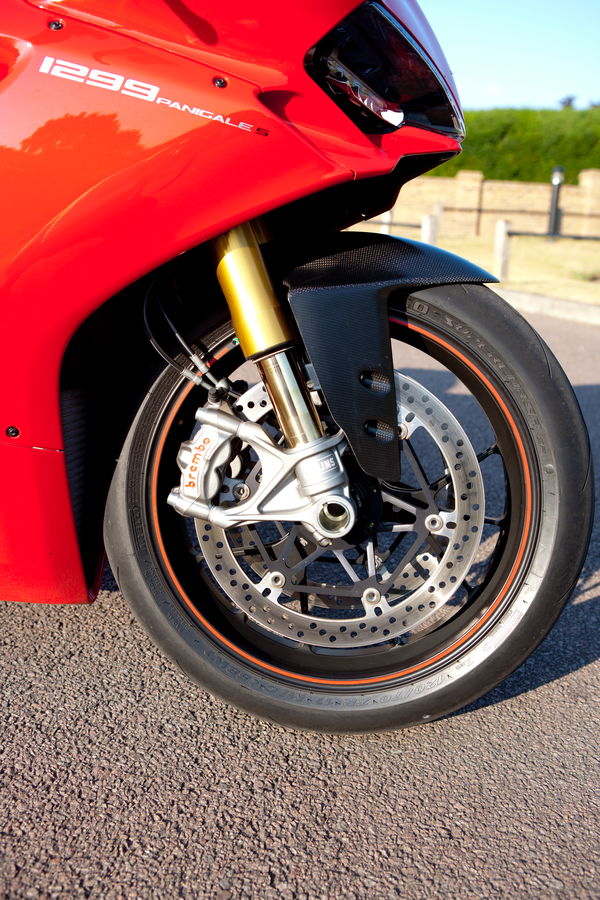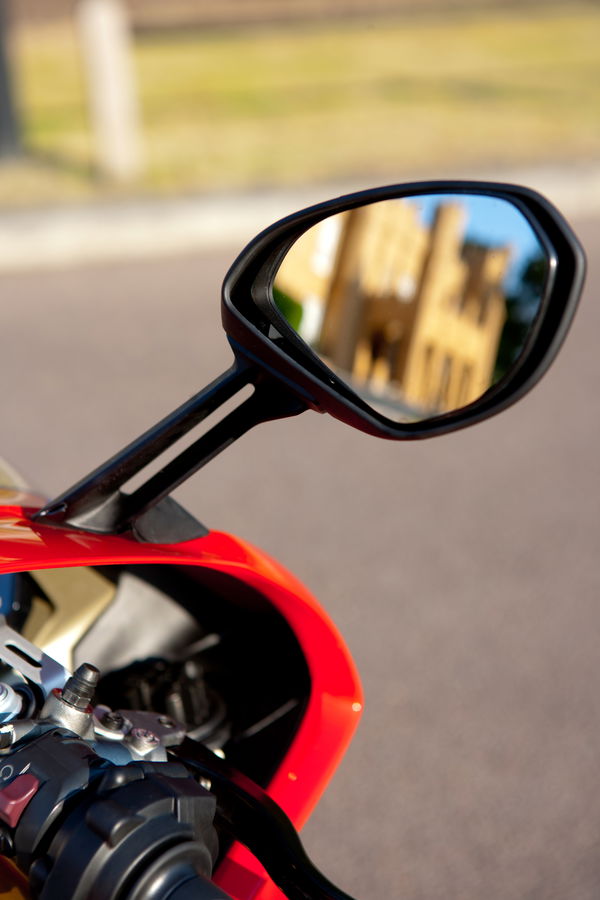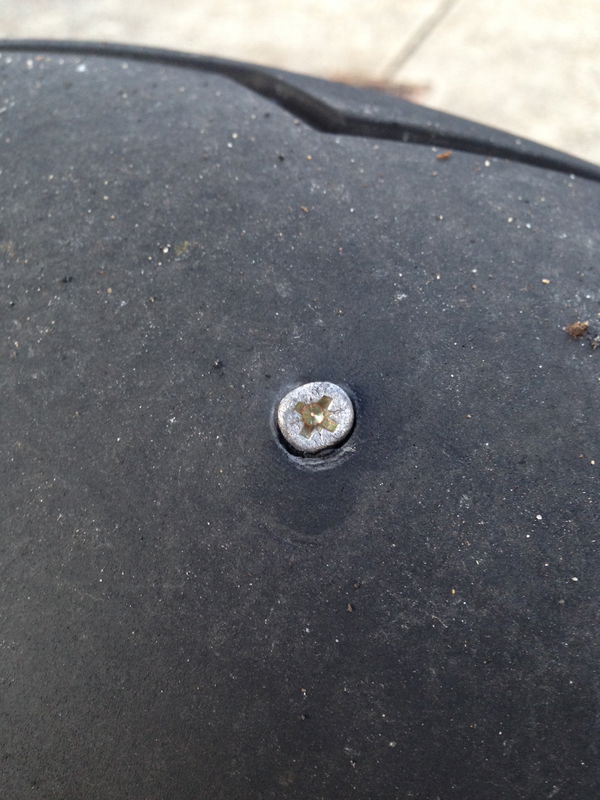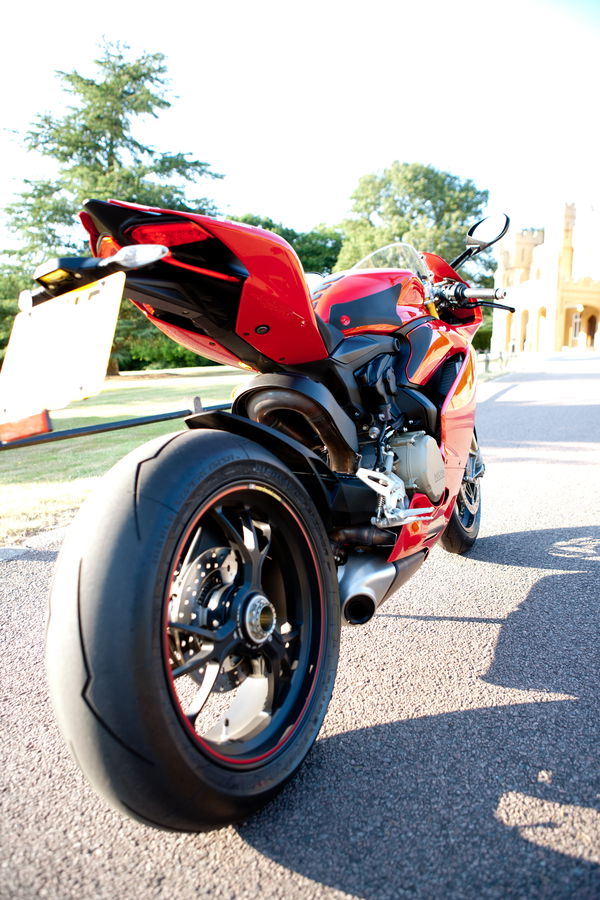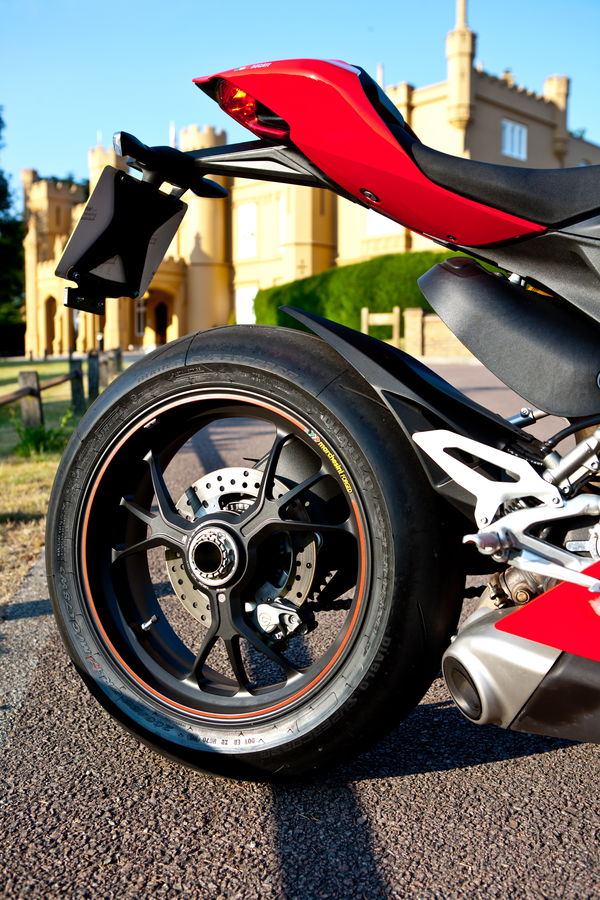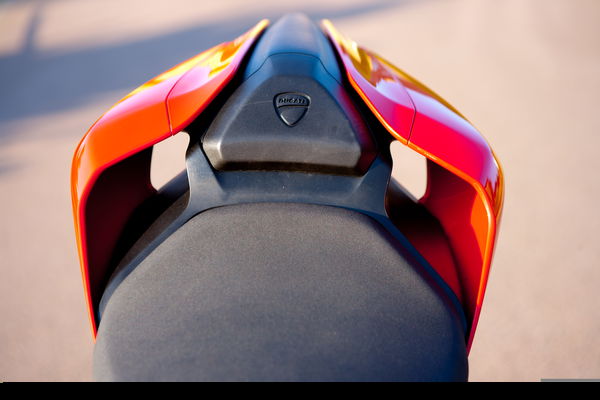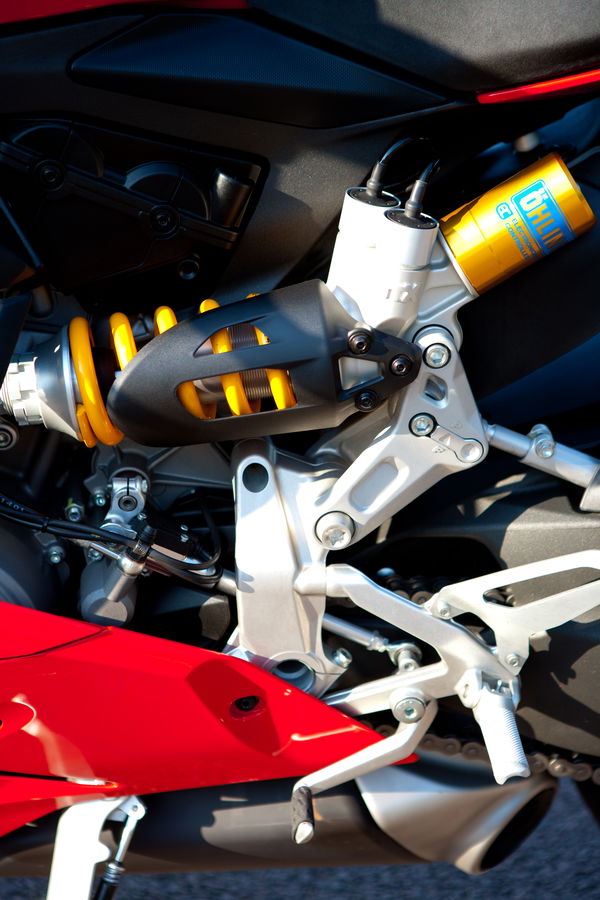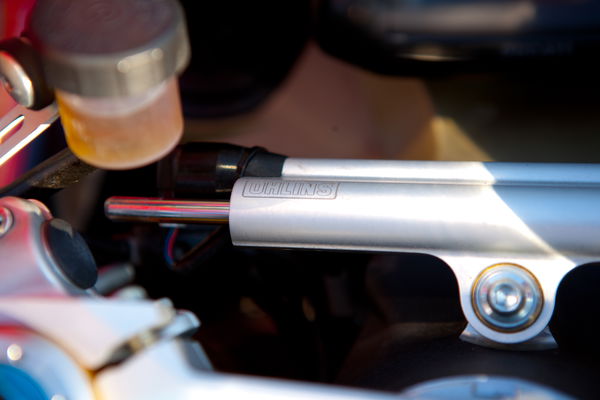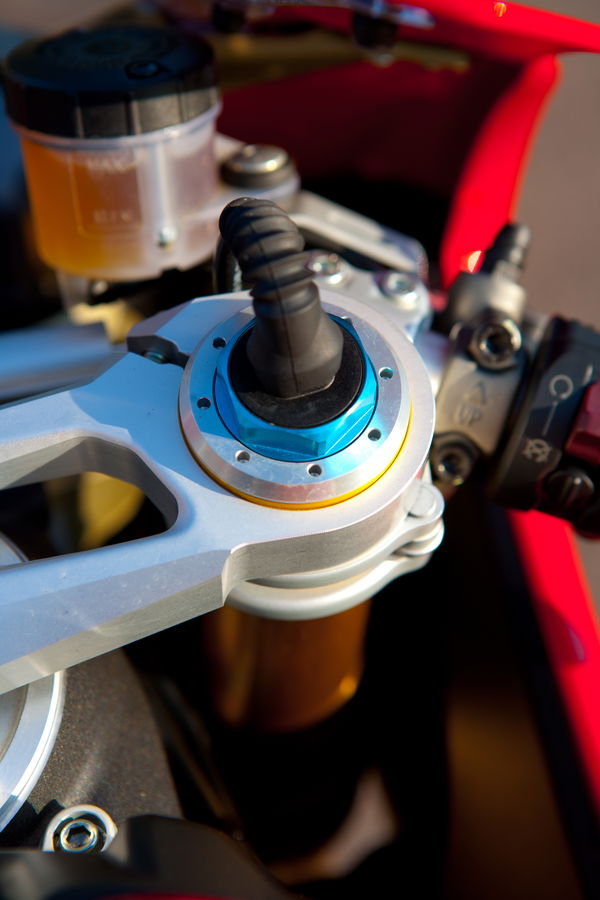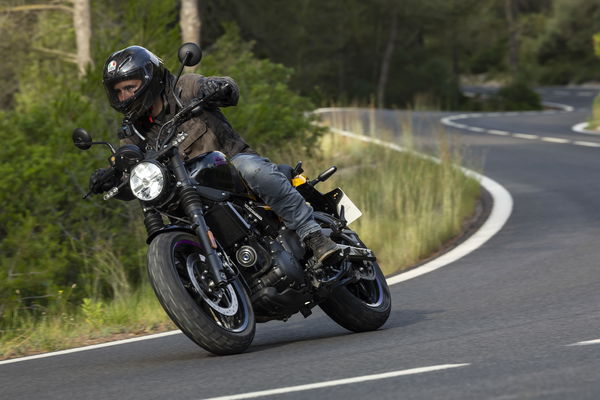1299 Panigale S review
The Ducati 1299 Panigale S is reviewed by former Manx GP racer Kane Dalton for Visordown


Ducati 1299 Panigale S: Handling and Suspension
The Ducati 1299 Panigale S is like motorcycle art. I fell in love with the machine’s looks the moment I saw it.
Ten minutes later I was also in love with the way it rode. I’d never before ridden a bike with semi-active (Öhlins) suspension, which automatically adjusts to conditions as you ride, but it only took about five minutes to familiarise myself with the settings and modes.
There are three pre-set modes which you can toggle between as you ride: Race, Sport and Wet. They change the ignition map, suspension damping, engine braking, cornering ABS, wheelie and traction control. There’s also an electronically governed Öhlins steering damper.
You can also manually set preferences within each mode. For example, race mode offers a more responsive map with stiffer suspension, but you can soften the suspension for fast road riding.
As soon as I swung my leg over the bike, the geometry struck me; it feels as compact as a 600. If I did not know better I would have thought I was sitting on an 899 Panigale.
I expected it to feel heavier and harder to stop and turn than the 899 but there was none of that. It feels and handles like a 600 too, just one with 205hp.
The handlebars are quite far apart, offering good leverage. It feels natural and responsive to input.
Ducati 1299 Panigale S: Engine
The 1299 Panigale S has four-piston Brembo calipers with huge power. A one-finger squeeze on the lever and the bike slows instantly with lots of control and feedback from the front end. The calipers are monoblocs so flex is reduced.
It’s got a fantastically sharp, light, racer-like feel as well as lashings of power. And it comes with a sense of occasion, drama and exclusivity.
Thunder is the response to rolling on the throttle. Cracking it open is like unleashing a force of nature.
Cruising in a higher gear, there’s little need to down shift. The bike just picks up and takes off. Corner-to-corner torque is immense but still manageable and user-friendly.
I span up the rear a couple of times as I cranked the throttle to the stopper when the tires were not fully up to temperature. The bike's response was ‘No problem, let me slow that spin down for you and convert to forward drive.’
The wheelie control reacts the same way, although you can dial it down if you want to get the front wheel in the air. The electronics are confidence-building. I’ve no doubt they will make most riders faster.
I also fell in love with the quick-shifter, which offers the potential to change down as well as up without using the clutch or closing the throttle. There’s something very satisfying about changing down the gears and hearing the throttle blip each time all by itself.
The first time I hit a few twisties it all instantly made sense. I toggled to race mode and immediately the suspension stiffened and the throttle response became more aggressive. It even sounded more aggressive.
In a brief storm I switched to wet mode, which softened everything up, giving me the confidence to open the throttle with more peace of mind.
When the sun came out again and the road dried, I was back to sport mode.
The 1299 S feels responsive to mid-corner tweaks when you need to tighten up your line. I found the bike dropped into corners so easily that I had to reign in my counter-steering and I started picking later turn-in points.
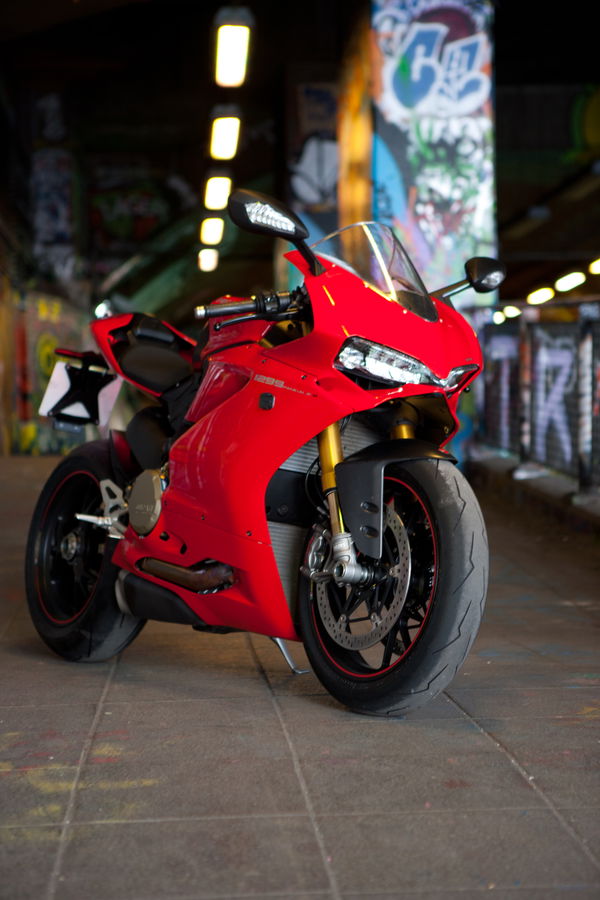
Sometimes, on track, I’ll turn up a bike’s idle, which helps move some weight off the front end and keep the machine stable in corners. The 1299 Panigale S's engine braking control (EBC) has a similar effect. It gives you a little run-on so you can get the weight onto the back wheel much more quickly, leading to better stability and higher corner speeds.
Ducati 1299 Panigale S: Features
The screen is a clear bubble. I'm quite tall and found it tricky getting tucked in behind it. I would probably go for a screen with a higher profile, an aesthetic sacrifice in favour of performance.
It would be good to have fully adjustable rear-sets as standard. On the standard pegs my knees were a little low against the tank so I couldn't grip it quite to full advantage. Ducati offers adjustable billet rear-sets at £866.
The standard exhaust sounds great but there's also an optional Termignoni one for £2,599.
The mirrors are well-positioned, providing rear visibilty when either sitting up or tucked in. Unlike the 1199 Panigale's, they don't fold back - why? Folding mirrors are useful when you need to squeeze into a tight space.
The 1299 also has the typical-Ducati wide turning circle. Get used to making three-point turns on narrow roads.
I ran into a problem in town: the bike consistently overheated. The temperature ran into triple figures with the overheating warning light on. A second warning said ‘Fan’.
Ducati has since clarified that the fan had failed, so our test bike would have been running unusually hot.
You can also feel the heat from the under-seat exhaust.
I got a puncture courtesy of a screw and in the process of having it repaired learned how easy the rear wheel is to remove. Remove the locking nut and it just slides off the spindle. The caliper stays where it is, on the disc, and the rear sprocket stays in the chain. It’s a great feature for track riders who may change wheels for dry or wet set up.
The 17-litre tank when brimmed gave me 85-90 miles before the fuel warning light came on.
That’s not exactly practical but such considerations become insignificant when you just look at this bike, never mind ride it. And people do look at it - everywhere you go. Be prepared for attention.
Ducati 1299 Panigale S: Specifications
- Model tested: Ducati 1299 Panigale S
- Price: £20,795 plus on-the-road charges (base model £16,695+OTR)
- Engine: 1285cc V-twin
- Power: 205hp @ 10,500rpm
- Torque: 106.7lbft @ 8,750rpm
- Kerb weight: 190.5kg
- Frame: Monocoque aluminium
- Tank capacity: 17 litres
- Seat height: 830mm
- Colours: red
- Availability: now
